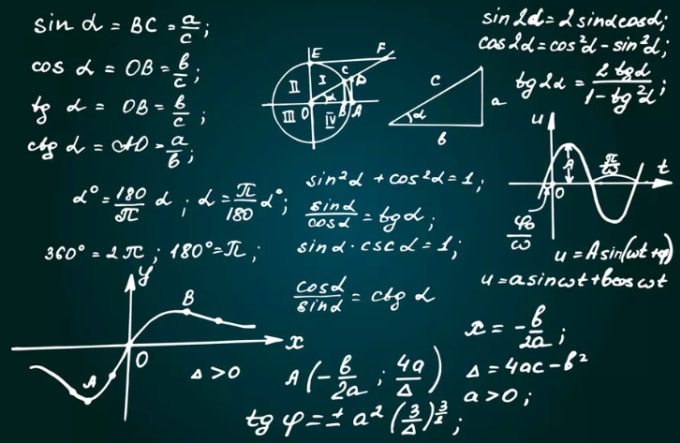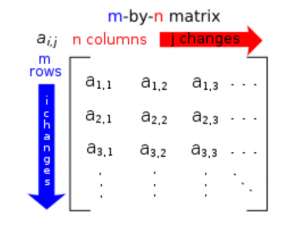Math | 3 year AGO
Let’s Ease out Addition and Subtraction of Matrices!

Whether you love or hate mathematics, there’s no way you can escape from it. The certain most way to ensure success in math is to gain clear understanding of the toughest of its concepts that one has to essentially study. Let’s try to gain command over it as you seek to score well in the subject.
’Matrices’ is one topic of math that you have to thoroughly try to comprehend in order to be good at it. Applying arithmetic operations like addition and subtraction on normal whole numbers is just fine, but when it is about doing the addition and subtraction of matrices, this is something that can confuse anyone to a great extent. So, if you are one of those who are looking for gaining better knowledge of matrices, before jumping directly on the operations of matrices, let’s begin by understanding what does a matrix stand for.
What is a Matrix?
A matrix (plural as matrices) is a rectangular array of symbols, numbers, and expressions that have been arranged in the form of rows and columns. A matrix that is having m rows and n columns is known to be the m x n matrix. It can also be stated as the m-by-n matrix in which m and n would be the matrix dimensions.
The concept of matrices is used for writing and working compactly with the multiple linear equations, which is called the system of linear equations. When related to the linear transformations, the matrices and matrix multiplication tend to reveal the features which are essential, which is then known as the linear maps.
A matrix is commonly written in the form of box brackets. The size of the matrix is known through the number of rows and columns contained in it. For a better understanding, have a look at the example below:

Here the dimensions of the matrix are 2 x 3, considering that there are two rows and three columns in the matrix.

The individual items which are given inside the matrix are known as the elements or the entries of the matrix. Each of the element given in the matrix is denoted by a variable that consists of two subscripts. For a better understanding, the element a2,1 tends to represent the particular value that has been added at the second row and the first column of matrix A.
Learn Calculus Online From Experts!
When the matrices are of the same size i.e. their number of rows and number of columns are the same then the two matrices can be added or subtracted, which will be done element by element. But in the case of matrix multiplication, the rule is different as the number of columns in the first matrix should be equal to the number of rows in the other matrix.
Matrices that tend to have only a single row are known as the row vectors while the matrices in which there is only a single column are known as the column vectors. A matrix that includes the same number of rows just as the number of columns is known as the square matrix.
Addition and Subtraction of Matrices
Addition and subtraction are the operations that can be implemented on the matrices. For conducting the operations, addition, or subtraction, it is necessary that the matrices should be of the same dimensions. This is the reason the resultant matrix can be assured to have the same dimensions. The use of matrix addition and subtraction are the aspects that can be used in real-life too. It can be used for the evaluation of sales of the last month and sales of this month or even to evaluate the average sales for any particular product in a given time.
We can make use of matrices to list the data or also for representing the systems. Because of the fact that the entries of the matrix are numbers, we can easily perform the arithmetic operations on the matrices. In other words, we can simply add or subtract the two given matrices just by adding or subtracting the corresponding entries, which will only be possible when the dimensions of both the matrices would be the same.
Adding the Matrices
For someone who is seeing a matrix first time, it can be horrifying but if you have gone through the above-mentioned basics about matrix, conducting the addition would be so simple for you. In order to conduct the addition, you just have to add each element of the first matrix to the corresponding element of the second given matrix.

Note that the first element of the first matrix, 1, is added to the first element of the second matrix, 10, giving a total of 11 which is written in the resultant matrix. The same process is followed with the rest of the elements of the matrices until the resultant matrix will be formed that will have the same dimensions as the matrices which were added.
Subtracting the Matrices
Now it can be simply guessed that the subtraction of matrices would be done in the same way the addition was performed, the only difference is you need to subtract the elements instead of adding them to each other.

In the above example of the subtraction of the matrices, the first element of the second matrix, 1, is a subtraction from the first element of the first matrix, 10, giving the result to be 9 which is presented in the resultant matrix. The same process is carried out with the other elements until we have our resultant matrix with the same dimensions as the matrices on which we applied the subtraction. Once again, it is important to make sure that the resulting matrix should have the same dimensions as the originals and you cannot perform the subtraction operation when the two matrices are having different dimensions. Also, necessary attention has to be given, when you subtract the signed numbers.
With this complete guide on the basics of matrix and the addition and subtraction of matrices, the students can get significant help in this chapter which could help them be swift with the arithmetic operations in matrices and derive to the right answers.















Post a Comment: